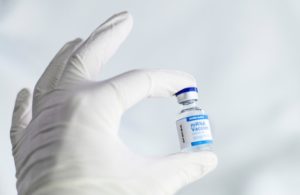-

Photo by Spencer Davis on Unsplash
For any vaccine, some degree of waste is expected. The problem is inspiring supply-chain companies to explore new technologies that can address a longstanding struggle.
“Before COVID-19, we often saw waste of about 8–10%,” said Ranjeet Banerjee, CEO of Cold Chain Technologies, which provides insulated packaging for drugs and biologics.
A 2019 World Health Organization report citing 2002 data concluded that between 5% and 50% of routine vaccines are wasted.
In some cases, entire pallets or freezers of vaccines are tossed out due to storage unit malfunctions that may have impacted only some vaccine vials.
In general, the biopharma industry loses roughly $35 billion each year as a result of cold-chain, according to a 2019 IQVIA report.
COVID-19 vaccines up the stakes. “COVID vaccine has ten times the complexity,” Banjree said. Not only are a variety of vaccines available with unique storage requirements, but “the scale is also immense,” Banjeree said.
To deal with the uptick in demand, Cold Chain Technologies built a new facility in Tennessee. It counts Moderna and Johnson & Johnson as customers.
But Banjeree realized that the company still had a gap. “We wanted a digital platform, where we can take the condition monitoring that we do and create alerts, real-time alerting and retrospective analytics of products as they move around,” Banjeree explained. “We wanted to make sure that we can create alerts, real-time alerting and offer retrospective analytics of products.”
Enabling real-time visibility for temperature-sensitive drugs and biologics
Cold Chain Technologies formed a partnership with Cloudleaf, a digital supply chain company, to enable such tracking. The partnership allows for Cold Chain Technologies to keep tabs on the location and condition of drugs and biologics, including COVID-19 vaccines, as they move through the supply chain.
There won’t be a surcharge for the service, according to Banerjee. “We’re not planning to charge for it separately. it’s a value-added service incorporated into the overall offering.”
The collaboration between the two companies also resulted in an IoT sensor-agnostic platform that enables pharma companies to cull individual vaccines that are out of compliance rather than discard entire pallets.
“We have a variety of portfolios, including for pallet shipments and for parcel shipments,” Banerjee said. For the latter, Cold Chain Technologies offers a variety of box sizes with unique thermal designs and can include IoT devices inside each box to enable parcel-level condition monitoring and real-time tracking.
One of the factors that led to the partnership between the two companies was Cloudleaf’s prior work with a large plasma processing company beginning in 2019. That experience “gave us a lot of insights about temperature control logistics in the pharma life sciences,” said Mahesh Veerina, CEO of Cloudleaf.
Cloudleaf has created a cloud-based platform that analyzes sensory signals from smart devices in the supply chain. As a result, it can follow products as they move from the warehouse down to the last mile. In the process, its technology can verify the current condition of vaccines and other therapies and if they are in compliance with regulatory requirements and are slated to arrive at their destination on time.
To optimize real-time alerts, Cloudleaf uses machine learning. “If a temperature drifts [from a target value], you can intervene and make a decision about what to do with it,” Veerina said. The algorithms also enable insights regarding how carriers are performing.
Marrying sensor data with machine learning
Machine learning algorithms armed with sensor data can keep tabs on the thermal capabilities of a shipping container. “You can understand the thermal capabilities of a box and how external weather is affecting it,” Veerina said. “If it’s on the road to New Mexico or on a tarmac, you can know if there is a decay in temperature because you’re getting a continuous signal. You can analyze and predict these kinds of insights.”
That ability to predict can enable pharmaceutical companies to prevent spoilage of at-risk therapies before it happens.
Banjeree is upbeat on the prospect of using technology to optimize the cold chain. “There’s about $350 billion worth of temperature-sensitive drugs and pharmaceuticals that are moved around every year,” he said. “The waste could be as high as 10% to 15%. We can attack those inefficiencies.”
Smart supply chains can also protect patient safety. “How do you guarantee, end to end, that there is absolute assurance that the drug has stayed in the narrow bands of conditions it was supposed to be maintained in?” Banerjee asked. “If you assume there has been a temperature excursion, there could be a health impact. So, to me, there’s both, there’s a waste problem to address, but there’s a huge medication safety and medication availability impact that is as big if not bigger.”